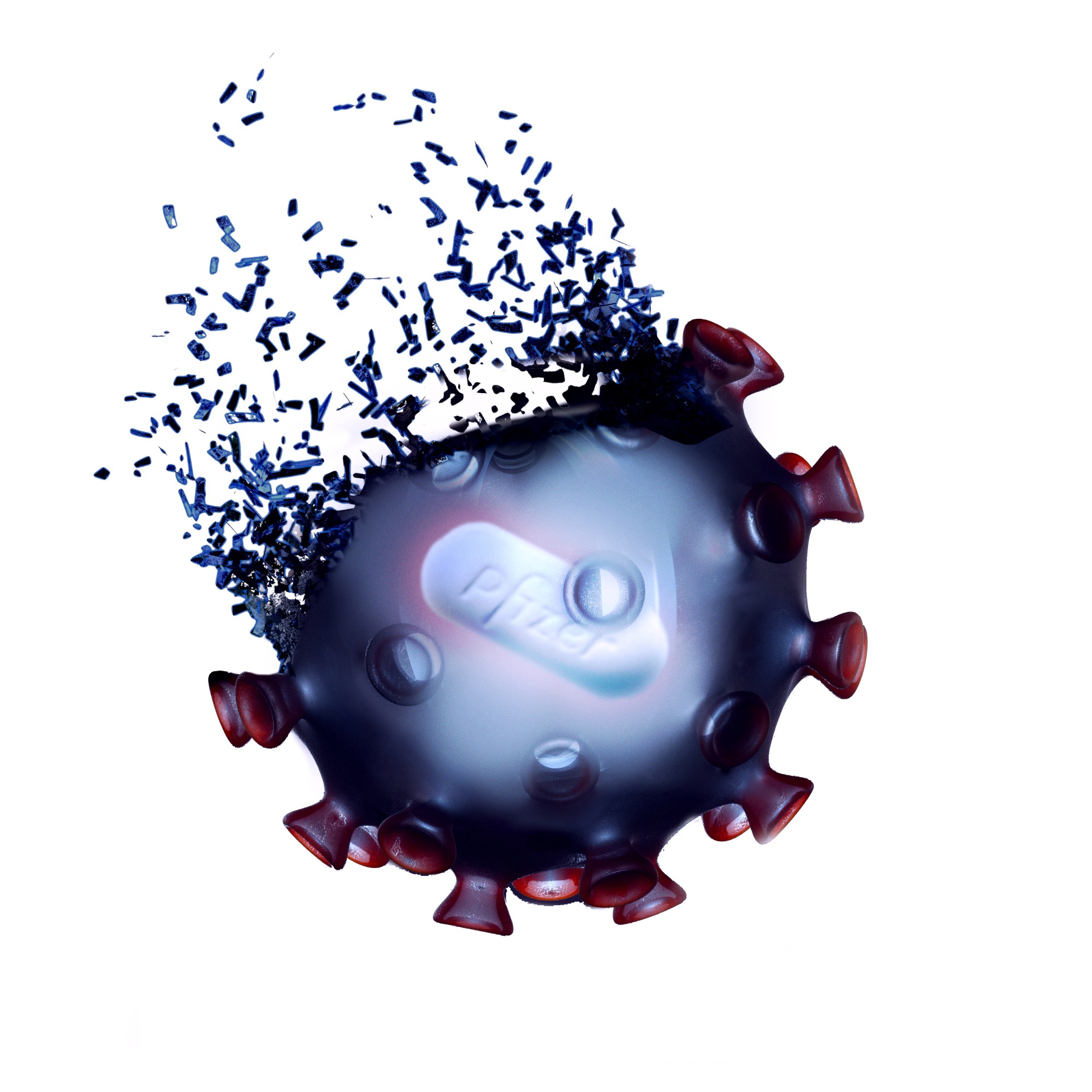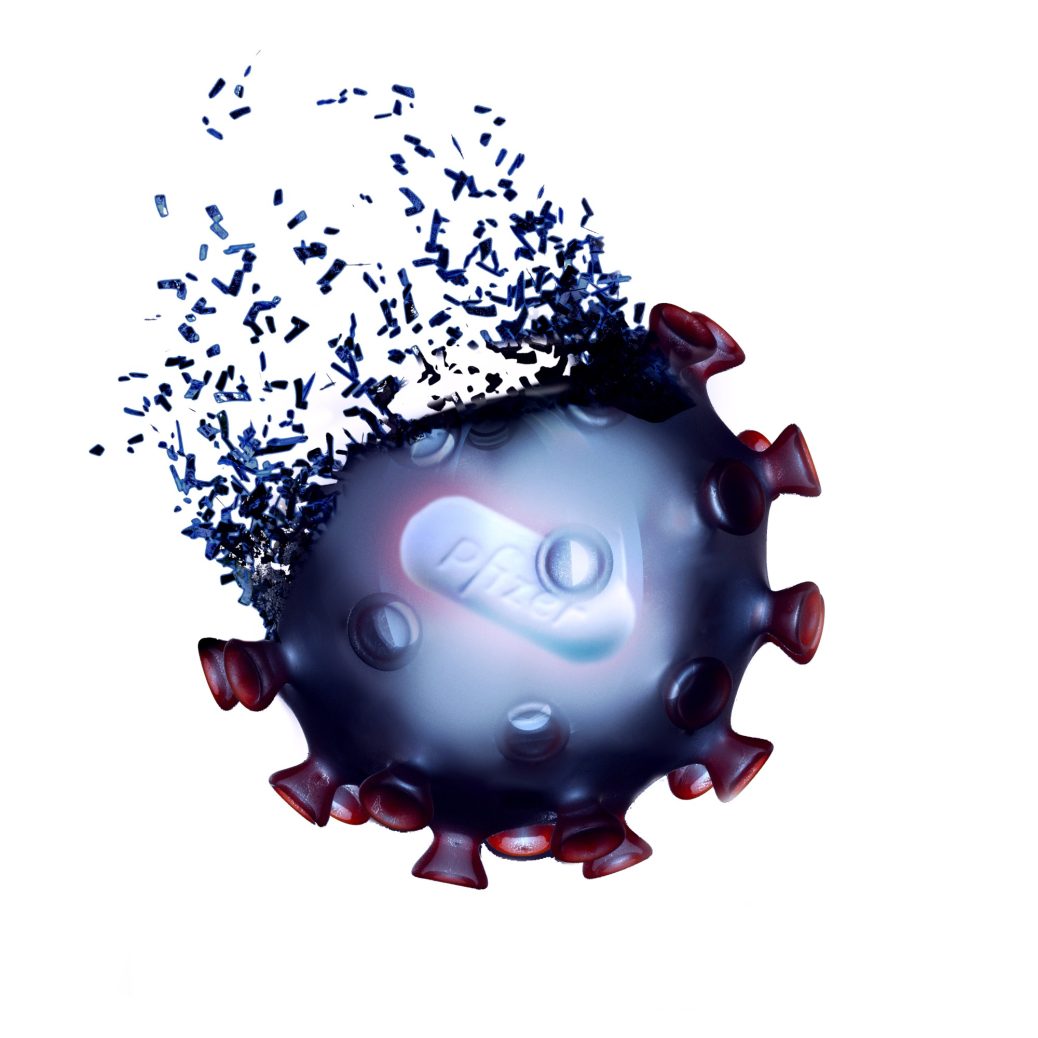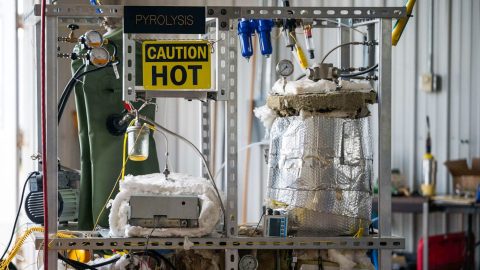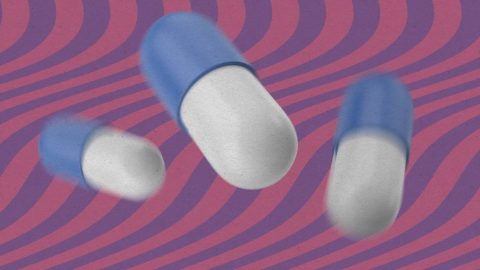The researchers knew if they could stuff that opening with a chemical that sticks to it very strongly—so strongly it can’t be detached—the protease wouldn’t do its job and the virus wouldn’t multiply. “To create a protease inhibitor, it’s like milling a key to fit a lock,” says Lin. “You want a drug that fits in that pocket perfectly and makes it unavailable.”
By mid-2020, chemists including Lin were tossing out proposals for chemical shapes that might work. But making and testing chemicals in a hurry is where the limitless R&D funds of big companies come into play. Pfizer was able to synthesize 800 molecules in all, according to the company.
After identifying the most promising ones, in September 2020, the company moved quickly. At that point, a company would normally invest in small production amounts for testing. But Owen wanted enough drug on hand to start a human study right away if it worked in animals. He took the gamble of speeding up production.
By December 2020, some of the first supplies of the new compound had reached White in New York. All eyes were on the vaccines from Moderna and Pfizer, which were approved that month. But in White’s lab, he was clearing his schedule so that Pfizer’s antiviral drugs could be given to mice infected with SARS-CoV-2. “I was extremely busy when Pfizer emailed, but we set up a Zoom and I moved them to the head of the line,” he says.
The first compound from Pfizer he tried was a bust. The second, Paxlovid, was an obvious hit, reducing the amount of virus in the mice’s bodies by a factor of one thousand or more. Within a year, the drug had gained authorization from the FDA.
Cost effective
In purchasing 10 million courses of Paxlovid for $5.3 billion, the US established a price of around $530 per course of pills—six tablets a day for five days. Italy, Germany, and Belgium also placed orders. According to Pfizer CEO Albert Bourla, the price of the vaccine (around $30 for each dose) helped determine what the new drug should cost.
For Pfizer, easy-to-take covid-19 pills could become another blockbuster. “It’s a license to make money. As much of it as they can make, they can sell to governments,” says Boulware. “Demand will outstrip supply, and that is going to be the case for the foreseeable future.”
But even at around $500 per person, Paxlovid could be a bargain. If Pfizer’s trial numbers stand up, doctors who give the drug to the patients at greatest risk could save about one person for every 100 they treat. That’s $50,000 for a life. Medical economists say the drugs even have the chance of being “cost negative”—that is, they’ll save money if they keep enough people out of the hospital, since each hospitalization costs thousands of dollars.
One area where antiviral pills have an edge is as an insurance policy against new variants—or even different coronaviruses that are yet to be discovered. Covid-19 has surprised scientists again and again by mutating in ways that allow it to spread faster or even evade immunity. Of the antibody drugs authorized to treat covid-19, several, such as the one sold by biotech company Regeneron, no longer work against omicron.

NICO ORTEGA
Resistance like that occurs because the virus continually changes its “spike”—the molecule it uses to get into cells, and the one targeted by vaccines and antibodies. Being able to shape-shift the spike gene, which is the most exposed part of the virus, is probably an evolutionary survival strategy—one that lets coronaviruses adapt to new species and dodge immune reactions. But researchers don’t think the virus can so easily evolve ways of dodging Paxlovid. That’s because the protease is very finely tuned for its job, so much so that even distantly related viruses have proteases that look very similar.
Could a Paxlovid-resistant form of covid-19 appear? It could—the protease could conceivably evolve enough to dodge the drug. But such a variant might be less good at copying itself and probably wouldn’t spread very far. “I don’t think that resistance is a big concern,” says Shafer, who maintains a database of drug-resistant types of HIV at Stanford University. “Changes to the protease are bad for the virus.” A treatment that lasts just five days also doesn’t give much time for the virus to evolve resistance, he says.
The less changeable nature of the protease gene—even among cousin germs—is also why Pfizer’s drug might prove useful against viruses we haven’t encountered yet. Laboratory tests run by the company show that in addition to blocking the growth of SARS-CoV-2 in cells, it also inhibits half a dozen other coronaviruses. These include MERS, a dangerous germ spread by camels that kills a third of the people who get it; the original SARS virus from 2003; and a handful of coronaviruses that cause only colds.
And although Paxlovid is the most promising antiviral out there for covid-19 right now, more than a dozen new antivirals are now in development; the next generation could be even better. That’s what happened with HIV. There are now so many effective HIV drugs on the market that the original protease inhibitors have been relegated to second-line treatment.
New pills for other viral diseases could be on the way too. In June 2021, the US finally turned its attention back to antivirals in a big way, announcing it would spend $3 billion on a major search for next-generation drugs. About half that money will pay to establish eight to 10 new antiviral research centers that will each work on covid-19 and another germ of their choice, like Ebola or the common cold.
“The espoused goal is to have something that’s off the shelf the next time one of these major public health threats emerges—actually, we want to have many things,” says Matthew Frieman, a coronavirus specialist at the University of Maryland School of Medicine, who is among those applying for the funds. According to Frieman, the idea is that coronaviruses could one day be treated with a combination of antiviral drugs, similar to the “cocktails” used to control HIV. “It’s the same idea: the more drugs in combination, the better,” he says. “And you protect against mutant viruses, because it’s harder to escape from two drugs than one. I think we need a suite of antivirals that target this virus.”
It may even be possible to find drugs that work against nearly any virus, even ones as different as Ebola and influenza. Frieman says he’s found some compounds that may do that by acting on the human body, rather than on parts of the virus. “We’re hoping there are a whole new spectrum of ways to target viruses,” he says. “We just need to find them. In the past, we had no funding because no one cared. I think we have only scratched the surface.”
Antonio Regalado is MIT Technology Review’s senior editor for biomedicine.







Recent Comments